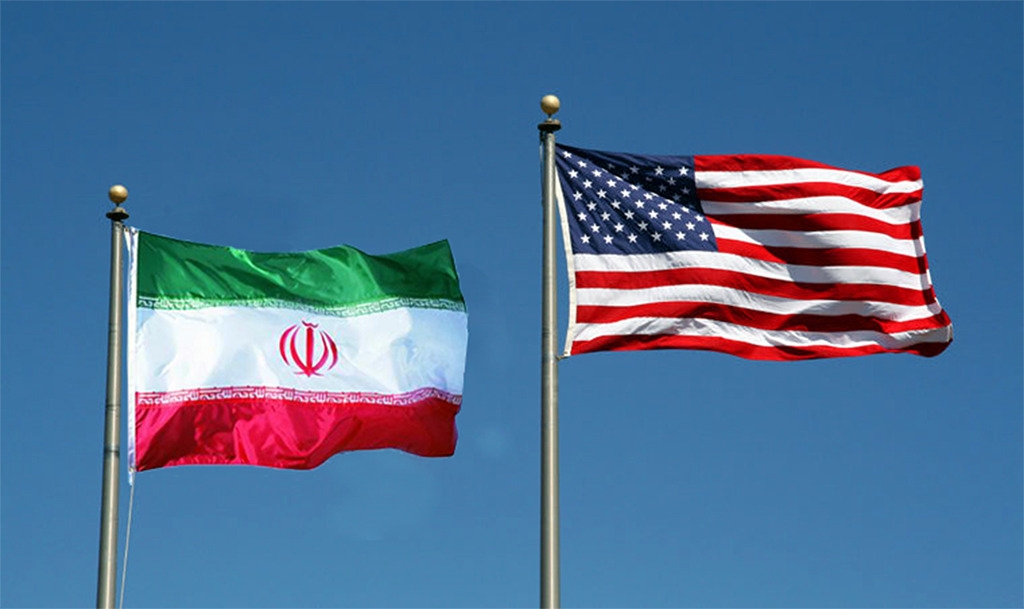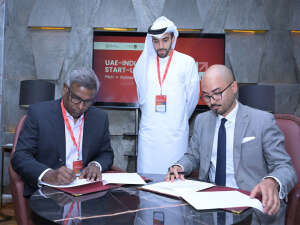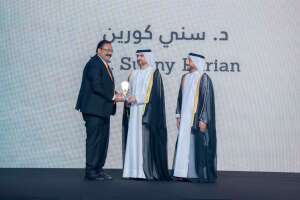Russia and China being on the same grid add to the advantage of both and this is of great significance since it may unsurprisingly lead to the rise of a new Cold War between the US and China this time, writes D.C. Pathak
The unending military conflict between Ukraine and Russia, the unevenness of economic growth in the US and Europe, and the rise of President Xi Jinping as the new cult figure of China after a period of impediments created by Covid for that country do indicate that a new Cold War was appearing on the horizon – this time between the US-led West on one side and a resurgent and ambitious China on the other.
China’s quest for becoming the second superpower in competition with the US is clearly making headway – the confrontation this time, is not merely between the ideologies of International Communism that prescribed total control of State over all means of production as one-party rule and the Western democracy that believed in a free market and a multi-party electoral system. The contest now is for military as well as economic power.
China drew crucial lessons from the dismemberment of the USSR resulting from the success of the US-backed anti-Soviet armed campaign in Afghanistan. That campaign was conducted in a ‘proxy war’ mode and on the war cry of Jehad and it compelled the withdrawal of Soviet troops from that country primarily because the Soviet economy had run into cracks caused by internal contradictions.
Deng Xiaoping began a controlled opening of the Chinese economy into the world, from where President Xi Jinping has not looked back and has in fact combined this economic strategy with a revival of Mao Dezong’s line of total control of CPC over the Chinese state. What is new is the emphasis placed by Xi Jinping on the ‘Sinicization’ of Marxism to serve the best interest of China and his invoking the ‘civilisational’ strength of China to add force to Chinese resurgence.
Xi Jinping has pursued a three-prong strategy of achieving the position of a superpower for China – the adoption of the economic route to reach there, focusing on the technology-backed military build-up, and geopolitically spreading its influence and hold through the so-called Belt & Road Initiative(BRI) in countries close and far where initial investment would be made totally by China.
With the demise of International Communism sealed at the Politburo meeting of CPSU in April 1991 in which Gorbachov ended Democratic Centrism in favour of Political Pluralism, China owned the leadership of the Communist world and it handled that with the characteristic restraint mandated by Sun Tzu’s doctrine of ‘winning the war without fighting’. It is not surprising that China is fully using the instruments of information and psychological warfare towards that end.
China is never in a hurry to negotiate and is following the dictum ‘two steps forward, one step backwards’ both on LAC in relation to India and in the Indo-Pacific against the US-led West.
India with its declared policy of building mutually beneficial bilateral relationships has done well to extend that principle to multilateral platforms as well – while maintaining its commitment to global peace, security and prosperity. India’s initiative for strengthening bonds with Japan, Australia and now also with New Zealand is to be seen in that light. Prime Minister Narendra Modi’s vision of making India militarily strong – with a strong element of self-dependence running through it – is bold, futuristic and appropriate.

The 18-month-long Ukraine-Russia military conflict has no end in sight and its repercussions in terms of geopolitics and the world economy have to be seriously studied and analysed since the two parties seemed to be viewing it only from their own one-sided angles.
The splintering of the USSR that ended the Cold War and reduced that superpower to a shrunken Russia should have encouraged the US – running a unipolar world order – to work for peaceful coexistence between Russia and the new nations on its periphery.
The Crimean War was provoked by the anti-Russia campaign by Islamic militants there who seemed to be on the right side of the West and it is noteworthy that President Donald Trump in spite of the Russian occupation of Crimea, managed to keep relations with President Vladimir Putin on an even keel. Trump in fact did not lay much store on American friendship with Europe and complimented Britain on the success of Brexit. He gave the call of ‘America First’ and practised it.
The advent of the Joe Biden administration put the American focus on Russia as a prime adversary – possibly because there was a strong belief in the Democratic camp that Russia had worked for Trump’s success. The talk of NATO’s role and of extending its membership to Russia’s neighbours revived tensions in the US-Russia relationship – Putin’s military intervention in Ukraine was claimed by Russia as an ‘operation’ meant to safeguard the interests of the Russian-speaking population in the eastern part of Ukraine.
If Ukraine had made an early declaration of its being a sovereign democratic country run on the electoral system of ‘one man one vote’ as was happening in India, the conflict might have been diffused to some extent.
In what should be regarded as a masterstroke of the foreign policy of the Modi regime, the Prime Minister of India reached out to both President Putin and Ukrainian President Volodymyr Zelensky of Ukraine to call for peace negotiations – what India was also able to do was to deliver a message to the world that security concerns of both neighbours had to be considered. That what is right also is the right thing to do in international relations today, is proven by India’s stand on the Ukraine-Russia conflict which has been accepted by the world at large and has not run into any opposition from the US itself.
In fact, Indo-US relations have acquired a new depth in this period quite simply because the two largest democracies shared the right to lead the democratic world against a different kind of future envisaged by the dictatorial China under Xi Jinping.
The Ukraine-Russia confrontation has to be examined from other angles too. The conflict has further enabled China to assume the leadership of the anti-US ‘bloc’ in the world inclusive of Russia and also project Xi Jinping as a global figure capable of mediating between the US-led West and Russia, on Ukraine.
The conflict has cemented the Russia-China axis – between the two former giants wedded to Marxism – and somewhere helped China to avail of the leeway it got because of the preoccupation of the US with Russia, for pursuing its own superpower ambitions. The US and its European allies have backed the cause of Ukraine to the hilt and rushed military armament and supplies to it besides prompting President Zellensky to seek NATO membership to gain further war support.
Over a period however, the US intervention on the side of Ukraine had started looking more like something falling into a ‘proxy war’ mode with the Ukrainians bearing the brunt of losses and hardships resulting from a war that was happening on their own land.
President Putin shrewdly inducted Soviet mercenaries of the Wagner Army to strengthen his hands in that environment. Proxy wars by their very nature prolong themselves and do not produce clear ‘wins’ – they look for one of the parties ‘blinking first’ to open a pathway to negotiations.
If the US saw a comparison of the Ukraine-Russia conflict with the experience of Soviet troops in Afghanistan, this approach would perhaps not hold ground because in Afghanistan the Soviet army was facing Mujahideen taking to covert violence – much rather like facing ‘terrorists’ in an irregular warfare – while Ukraine was giving Russians plenty of visible targets to destroy through its firepower and weaken the opponent.
Russia can match any escalation of war caused by the US camp and on the economic front have the satisfaction that sanctions and trade embargoes affected both sides. Russia and China being on the same grid add to the advantage of both and this is of great significance since it may unsurprisingly lead to the rise of a new Cold War between the US and China this time.
These are testing times for India even as Prime Minister Modi has emerged as a world leader influencing the issues of war and peace.
India’s independent stand on the Ukraine-Russia conflict has not come in the way of India adding further depth to the Indo-US relationship while retaining the support of President Putin and defence cooperation with Russia as well. India has strengthened its military capability on LAC and assumed a more active profile in dealing with China on multilateral forums like Quad without losing the goodwill of Russia and has avoided doing anything that could possibly push Russia into the Chinese lap on issues affecting India. India’s role in BRICS has been quite effective – this platform has a dominant presence of China and Russia.
In the backdrop of China, having emerged as the largest trading partner of Africa, the recent BRICS summit at Johannesburg saw Prime Minister Modi reaffirming India’s commitment to universal economic growth, recording his special interest in the advancement of the Global South and emphasising the transformation India had achieved through digitisation, ease of doing business and launch of startups, on its way to becoming a $5-trillion dollar economy soon.
While President Putin highlighted the need for BRICS to become a strong economic block, President Xi Jinping in his message struck a different note and warned that “changes in the world in our time are unfolding in ways like never before bringing human society to a critical juncture”. He called for the ‘expansion of BRICS for building a more just and equitable international order’ and claimed that “hegemonism was not in China’s DNA”.
Xi Jinping unlike other participants took a geopolitical sweep in keeping with his professed mission of achieving a superpower status for China. In a conversation with President Xi Jinping on the sidelines of the BRICS summit, Prime Minister Modi frankly expressed India’s concerns over the tension at LAC in the Western sector indicating that this came in the way of normal relations whereupon the Chinese President pleaded that they both should direct their officials to expedite the process of de-escalation. It would appear that Xi Jinping has taken note of the rising profile of India as also of the ‘political will’ shown by Prime Minister Modi in dealing with this nation’s adversaries.
For India, these are challenging times as far as handling international relations was concerned and Prime Minister Modi – aided by National Security Advisor Ajit Doval who had established a special grid with his counterparts in all major countries including the US, UK, Russia, Israel, Japan, Iran and even Saudi Arabia – has marshalled the foreign policy on a note of excellence. It is a requirement of the times we live in that all nations wanted security and economic development – in that order – and Prime Minister Modi too does not move without the counsel of the NSA who was in a position to provide the best assessment of geopolitical developments.
A singular challenge for India however, is to deal – on its own -with the Sino-Pak axis that was geared to targeting India and it is a matter of great satisfaction that India has a comprehensive strategy in place to counter these two hostile neighbours simultaneously. India has, among other things, successfully used all multilateral platforms to mobilise world opinion against ‘expansionism’ and ‘terrorism’ to expose the latter.
In a situation of possible drift of the world towards a new Cold War, India has positioned itself well as the global counsel that raised the sane voice. Prime Minister Modi’s declaration that G20 under India’s Presidency would ‘transform the world order’ is a confident affirmation of India’s emergence as a world power that specifically stood for the Global South. It is also a message to China that India was well prepared to deal with it internationally – not merely on the LAC.
(The writer is a former Director of the Intelligence Bureau. Views expressed are personal)













